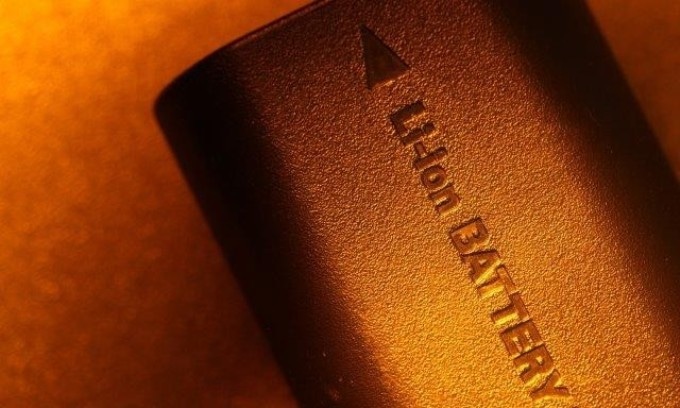Aug 27 2019
Proteins are essential for building muscle, but their building blocks may also help in creating sustainable organic batteries that could one day be a feasible substitute for conventional lithium-ion batteries, without their environmental and safety issues.
 Lithium-ion batteries could one day be replaced by power sources made of polypeptides, the building blocks of proteins. (Image credit: Janaka Dharmasena/Shutterstock.com)
Lithium-ion batteries could one day be replaced by power sources made of polypeptides, the building blocks of proteins. (Image credit: Janaka Dharmasena/Shutterstock.com)
By using polymers, including synthetic polypeptides which make up proteins, scientists have taken the primary steps toward developing electrodes for such power sources. The work could also offer a new understanding of electron-transfer mechanisms.
The scientists will present their findings at the American Chemical Society (ACS) Fall 2019 National Meeting & Exposition. ACS is the largest scientific society in the world. It features over 9,500 presentations on a broad range of science topics.
“The trend in the battery field right now is to look at how the electrons are transported within a polymer network,” said Tan Nguyen, a PhD student who helped in developing the project. “The beauty of polypeptides is that we can control the chemistry on their side chains in 3D without changing the geometry of the backbone, or the main part of the structure. Then we can systematically examine the effect of changing different aspects of the side chains.”
Existing lithium-ion batteries can damage the environment, and since the cost of recycling them is higher than manufacturing them from scratch, they frequently end up in landfills. At present, safe disposal means are not available. Creating a protein-based or organic battery would alter this situation.
“The amide bonds along the peptide backbone are pretty stable—so the durability is there, and we can then trigger when they break down for recycling,” stated Karen Wooley, PhD, who leads the team at Texas A&M University. She visualizes that polypeptides would ultimately be used in applications like flow batteries used for storing electrical energy.
The other advantage is that by using this protein-like architecture, we’re building in the kinds of conformations that are found in proteins in nature that already transport electrons efficiently. We can also optimize this to control battery performance.
Karen Wooley, PhD, Study Lead, Texas A&M University
The scientists designed the system using electrodes composed of composites of carbon black, building polypeptides that contain either 2,2,6,6-tetramethylpiperidine 1-oxyl (TEMPO) or viologen. They fixed viologens to the matrix used for the anode, which is the negative electrode, and utilized a TEMPO-containing polypeptide for the cathode, which is the positive electrode. The TEMPO and viologens are redox-active molecules.
What we’ve measured so far for the range, the potential window between the two materials, is about 1.5 volts, suitable for low-energy requirement applications, such as biosensors.
Tan Nguyen, PhD Student, Texas A&M University
For possible use in an organic battery, Nguyen has synthesized numerous polymers that adopt various conformations, such as an alpha helix, a random coil, and a beta sheet, to examine their electrochemical features.
Keeping these peptides in hand, Nguyen is currently partnering with Alexandra Danielle Easley, a PhD student in the laboratory of Jodie Lutkenhaus, PhD, also at Texas A&M University, to construct the battery prototypes. Part of that research will include testing to properly understand how the polymers work when they are organized on a substrate.
While this early-stage study has a long way to go before organic-based batteries are available in the market, the flexibility and range of structures that proteins can offer promise widespread potential for sustainable energy storage that is environmentally safer.
The scientists received support and funding from the National Science Foundation, the Welch Foundation and the U.S. Department of Energy.